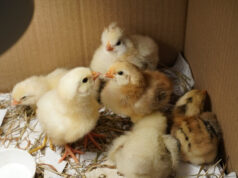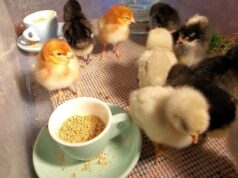If you’re considering raising chicks, using a plastic bin chick brooder is a popular and practical choice for many chicken enthusiasts. It’s essential for the wellbeing of young chicks during their early stages of life. In this article, we’ll explore how you can set up a brooder using a plastic bin, the benefits of this method, and how it compares to other options. This information is vital, especially if you are venturing into chicken rearing for the first time.

Why Choose a Plastic Bin for Your Chick Brooder?
Using a plastic bin chick brooder offers several advantages over traditional wooden brooders or other setups. These bins are affordable, easy to clean, and ensure safety and comfort for your chicks. They provide adequate space for movement while ensuring the warmth the chicks need.
Benefits of Using Plastic Bins
- Affordability: Plastic bins are inexpensive and readily available.
- Easy to Clean: Their smooth surfaces make cleaning straightforward, reducing the risk of disease.
- Portability: Lightweight and easy to move if you need to adjust temperatures or locations.
Setting Up Your Plastic Bin Chick Brooder
Before bringing your chicks home, ensure your brooder is ready. Setting up a plastic bin chick brooder involves some key steps:
Choosing the Right Bin
Select a bin that is at least 18 inches high to prevent chicks from hopping out. The size should be appropriate for the number of chicks, allowing ample space for growth and activity.
Essential Brooder Components
- Heat Source: A heat lamp is crucial to maintain the optimal temperature inside the brooder.
- Bedding Material: Use clean, dry shavings for bedding to provide comfort and absorb moisture.
- Food and Water: Ensure the availability of clean water and chick starter feed at all times.
Maintaining the Brooder
Regular maintenance of your brooder is essential for the health of your chicks. Ensure that you check the brooder daily, adjusting the heat and cleaning as necessary. Make sure their food and water supply is constant.
Temperature Management
The initial temperature in the brooder should be around 95F (35C), gradually decreasing by 5F each week as the chicks grow.
Health and Safety Tips
Keep an eye out for signs of distress in your chicks, such as panting or crowding near the heat source. Make sure the brooder is free from sharp edges and other potential hazards.
Moving Chicks to a Larger Space
As your chicks grow, they will need more space to roam. Transitioning them to a larger area should be done when they are about 4-6 weeks old, depending on growth and temperature needs.

Frequently Asked Questions
What size is best for a plastic bin chick brooder?
A bin at least 18 inches high with ample space for movement and growth is recommended. The size of the bin depends on the number of chicks you plan to brood.
How often should I clean the brooder?
Clean the brooder weekly or more frequently if needed. Keep an eye on moisture and droppings to ensure a healthy environment.
Can I use a plastic bin brooder outdoors?
While primarily for indoor use, a plastic bin can be used outdoors if weather conditions are stable and you take necessary precautions to maintain temperature and safety.
This article contains affiliate links. We may earn a commission at no extra cost to you.










